Editor’s Note: Since this article was published March 29, IHME has released new projections for the state. That update is immediately below, followed by the original story.
Update April 6:
Texas’ coronavirus pandemic peak for resources and death count is significantly lower than previously projected and will come at an earlier date, according to the Institute for Health Metrics and Evaluation (IHME).
The model projects Texas will reach its peak for resources and daily death count on Monday, April 20 which is a stark contrast from last week’s projections that expected the state to hit its peak on May 5.
IHME’s projections expect Texas to use the peak of its hospital resources in two weeks, but the state currently has enough beds and ventilators to handle the peak. On April 20, the model projects Texas will need nearly 3,700 beds for coronavirus-related patients. Currently, Texas has more than 28,000 beds available for use.
Texas will need around 720 ICU beds for COVID-19 patients and currently has over 2,250 ICU beds available, according to IHME.
Texas will require a little over 600 ventilators at the pandemic’s peak, according to the model.
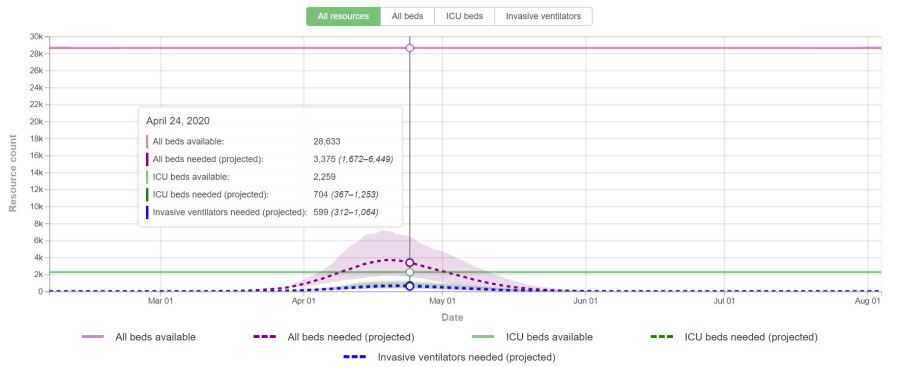
The state’s highest daily death toll is expected to be 72 which is half of the model’s estimation on March 31. The model projects Texas won’t have any deaths in state by June 1.
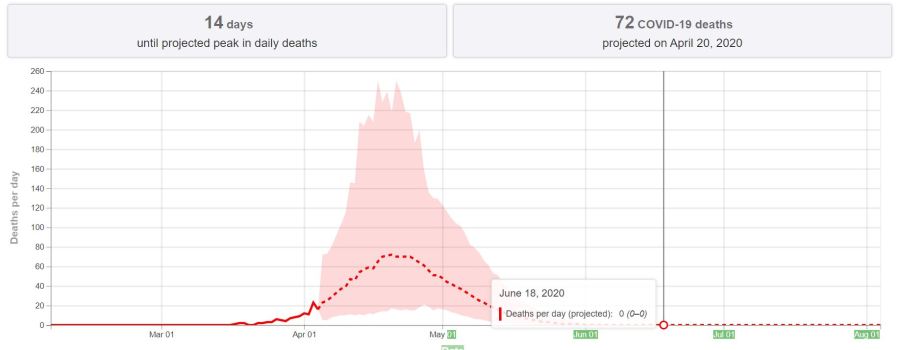
Update March 31:
The Institute for Health Metrics and Evaluation (IHME) has updated its projection for when Texas’ coronavirus pandemic peak will occur, pushing its initial projection of peak hospital resource use back to May 5. However, it also estimates there will be fewer deaths in Texas at the pandemic’s peak than first thought.
The new projection still estimates there will be an ICU bed shortage of about 210 on the peak date, but maintains the total number of hospital beds available will be greater than those needed on May 5.
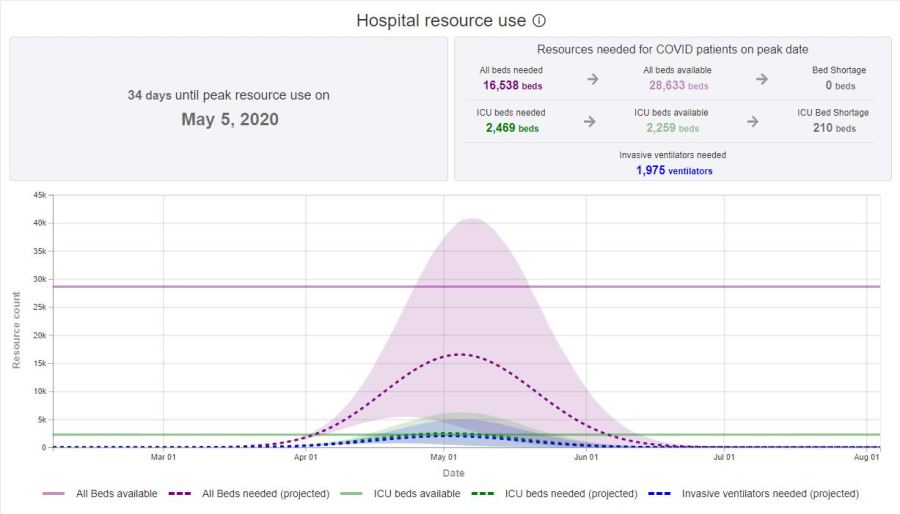
IHME’s latest projections show a more gradual rise in the state’s death count compared to previous charts. For example, the initial graph projected a daily death toll of over 180 Texans in the middle of April. The institute’s newest graph predicts a daily death toll of around 50 Texans on the same date in April.
The model also projects in 35 days, Texas will reach its peak deaths — 155 per day on May 6, compared to a previous estimate of 186 during a peak on April 16.
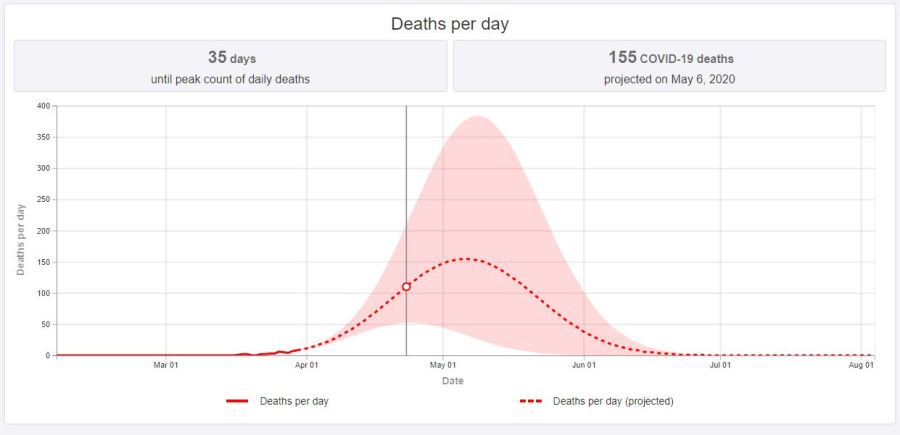
The new model has increased its estimate of total deaths to 6,029 by Aug. 4.
The model’s estimate for total deaths in the United States is more than 83,000.
Original Story published March 29:
AUSTIN (KXAN) — Texas is nearly three weeks away from the peak of the coronavirus pandemic, a model produced by the Institute for Health Metrics and Evaluation (IHME) suggests.
According to those projections, the Lone Star State will hit peak hospital resource use on April 18.
At that time, the number of ICU beds needed for COVID-19 patients will exceed the number available in Texas, according to the model. However, the number of all hospital beds available will remain greater than the number of patients needing those beds.
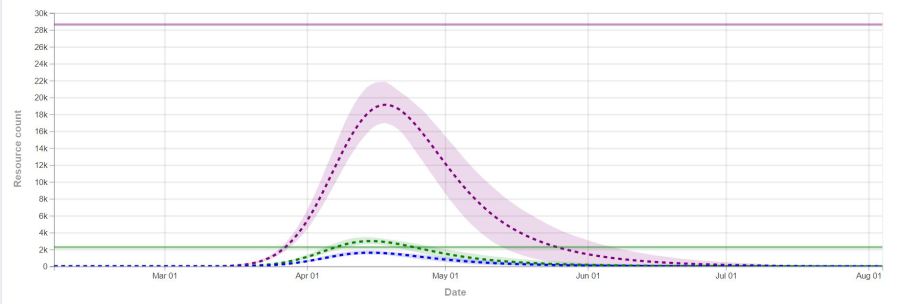
IHME believes that Texas’ peak for daily deaths from the virus will peak two days earlier, on April 16. At the peak, 186 people could die in a day, figures suggest.
However, graphs produced by IHME suggest that the number of lethal cases could drop drastically by the start of June, and the virus could be almost completely eradicated by July.
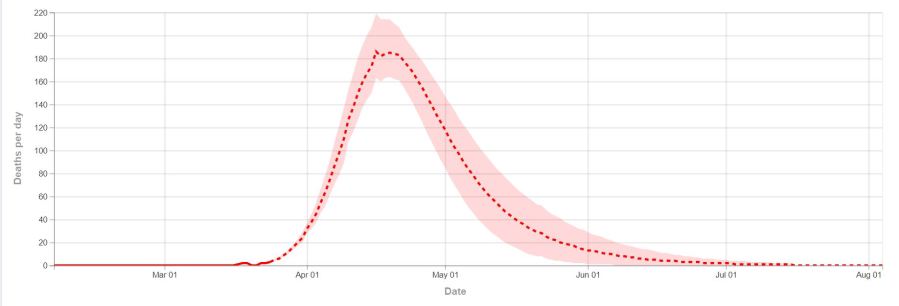
The projections rely on assumptions that the public will practice strong social distancing, and that governments will bring in further protective measures.
There are 28,633 hospital beds in Texas, IHME says. At the virus’ strongest, the model predicts that about 19,000 COVID-19 patients will require use of those beds.
Of those patients, about 2,876 will need an ICU beds, projections claim – but there are only 2,259 ICU beds in the state.
The model predicts that the number of deaths from coronavirus will continue to climb until the middle of July. In total, it believes that about 5,847 people in Texas will die from the virus.
The same model suggests that 81,000 people will die from coronavirus in the United States.
IHME published the method it used to forecast these projections. It can be viewed here.
















